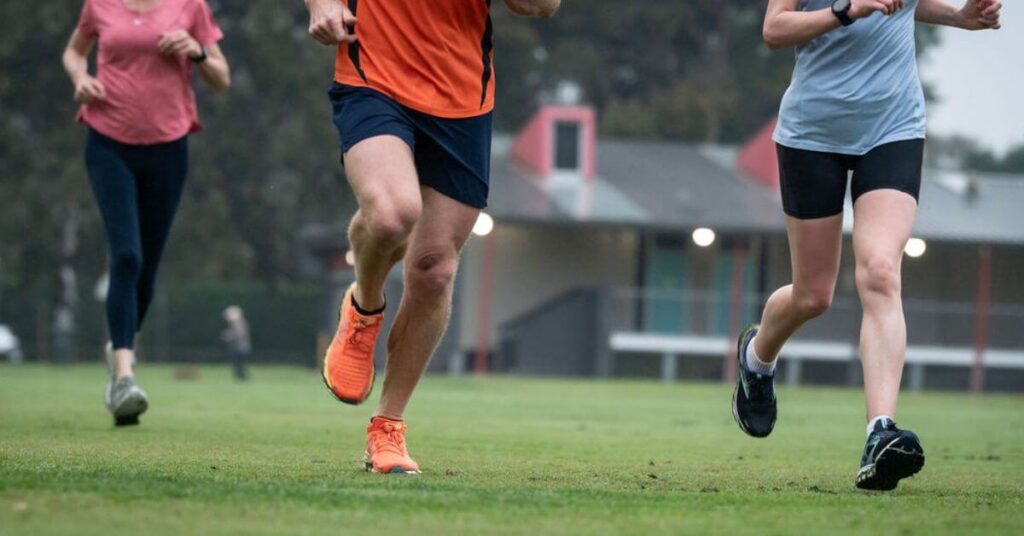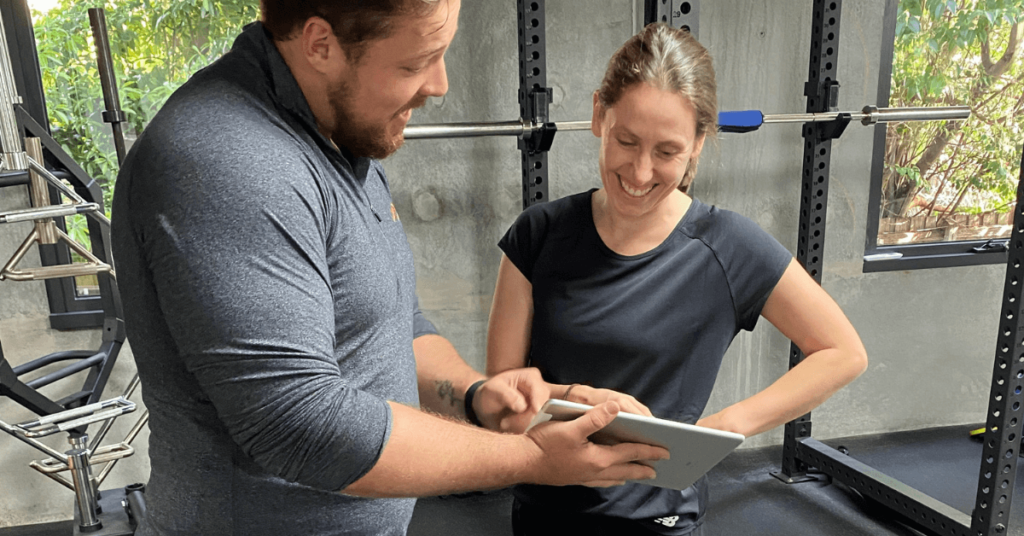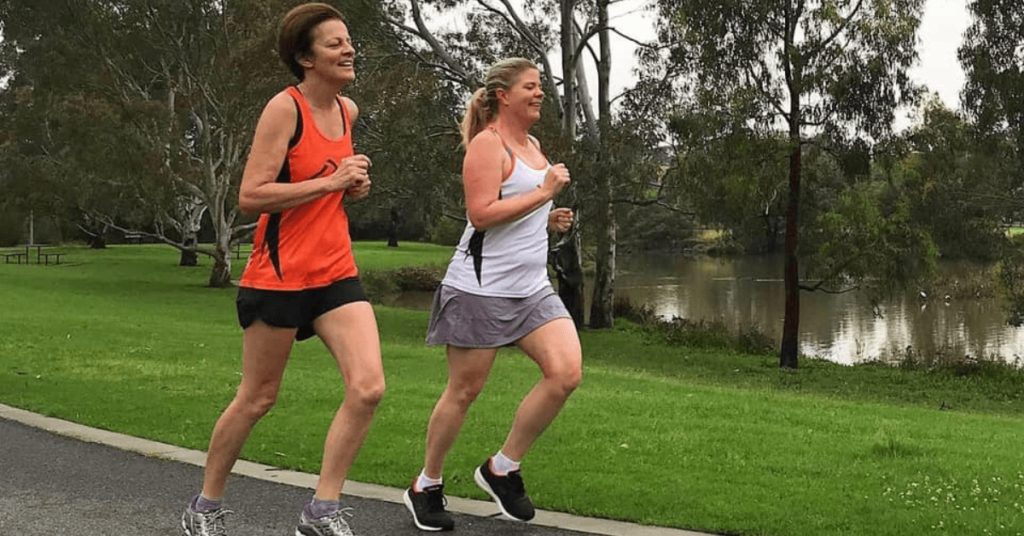A Runner's Diary: Tracking the Ups and Downs of Wearing Orthotics
Reading Time: 10 minutes and 7 seconds
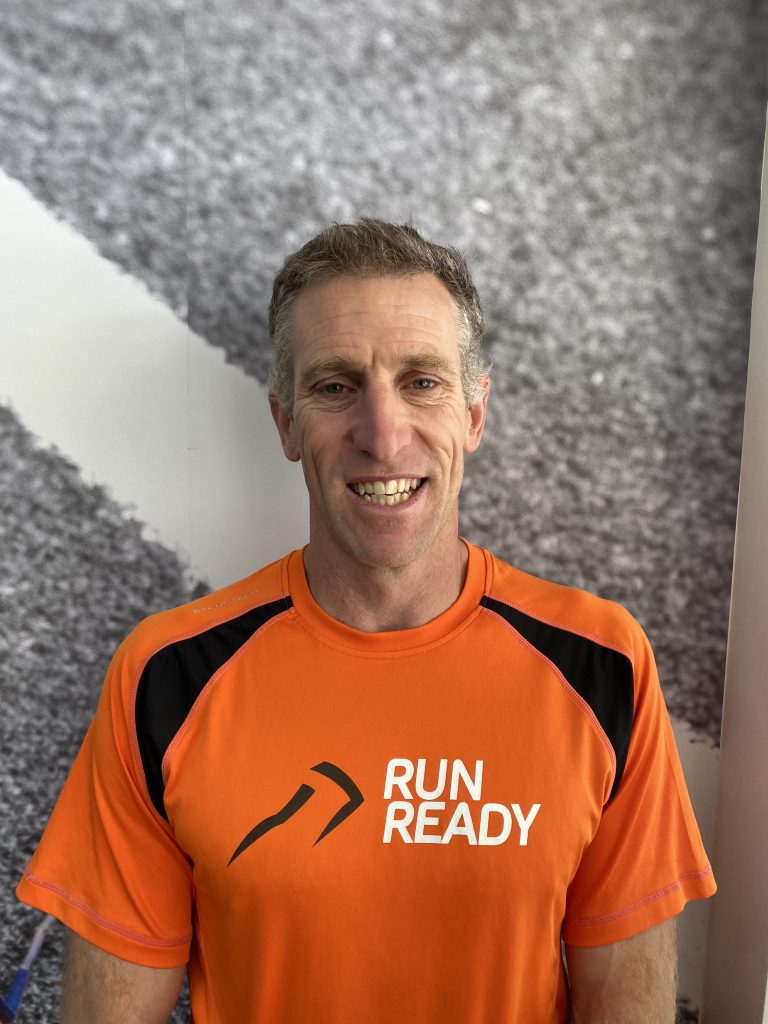
Nick Bowden
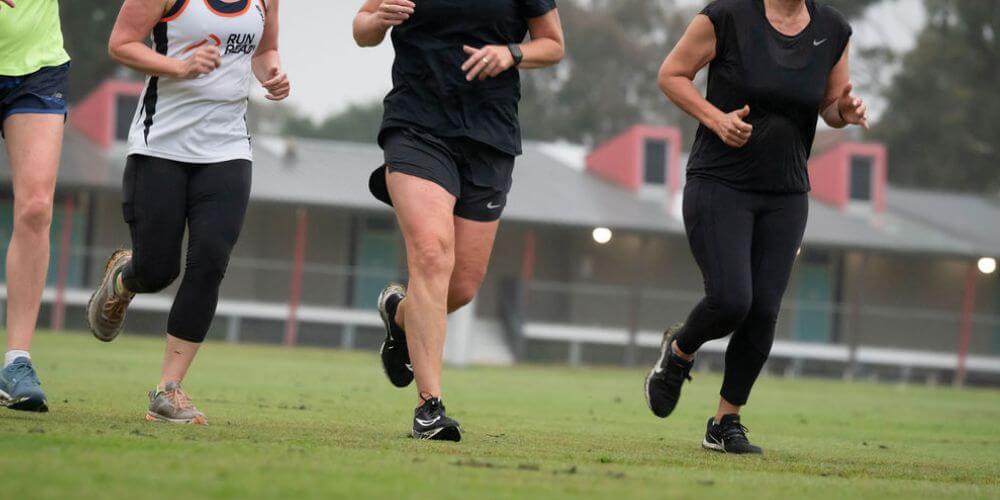
Running has been a passion of mine for as long as I can remember. The thrill of hitting the pavement, pushing my limits, and the sense of accomplishment after each run are unmatched. However, my journey as a runner took an unexpected turn when I started experiencing recurring foot pain and discomfort. As a sports physiotherapist, I knew the importance of addressing these issues, and that’s when I decided to give orthotics a try.
Initially, I was ecstatic about the prospect of orthotics alleviating my foot pain and improving my running performance. I had high hopes that these custom-made insoles would provide the support and alignment my feet needed to run comfortably and efficiently. Little did I know, the road ahead would be a roller coaster of ups and downs, with unexpected challenges and surprising solutions.
While the orthotics did help alleviate some of my foot issues, I soon encountered a new set of problems. Getting blisters and experiencing muscle imbalances were part of the journey and made me feel like every step forward was taking me two steps backwards. But as a dedicated runner and healthcare professional, I refused to give up. Instead, I decided to document my journey in a runner’s diary, chronicling the highs and lows, the triumphs and setbacks, and the valuable lessons learned along the way.
Table of Contents
What are orthotics?
Orthotics are custom inserts crafted to fit snugly inside your shoes, meticulously created based on a doctor’s prescription to match your specific foot structure. These inserts are essential for correcting biomechanical foot irregularities, redistributing pressure across your feet strategically, improving alignment, and providing crucial cushioning. Their main purpose is to alleviate foot discomfort, enhance overall mobility, and act preventatively against potential foot injuries or conditions. Unlike generic insoles you can purchase in stores, orthotics are tailored precisely to your foot contours and needs, ensuring a unique fit that addresses your specific requirements.
Now that you have an idea of what orthotics are and why they are used, it’s time to embark on an adventure as I log in my runs and my experience running with orthotics. Embarking on a running adventure with orthotics can be a revelation for some, and a challenge for others. In my running diary, I delve into the nuanced realities of integrating orthotics into my regimen. While they’ve offered me substantial support and corrected long-standing imbalances, they’ve also introduced me to the complexities of adaptation and the art of patience. The pros, such as enhanced alignment and pain mitigation, often go hand-in-hand with a period of adjustment and the cons of finding the right fit and dealing with initial discomfort. As you join me through the pages of my experiences, you’ll gain insight into the delicate balance of orthotics in a runner’s world—the triumphs, the setbacks, and everything in between.
Week 1 The Challenge of Adjusting to Orthotics
As an avid runner and sports physiotherapist, I am no stranger to the occasional discomfort of pushing your body to its limits. However, nothing could have prepared me for the challenges I faced during the first week of wearing my new orthotics. Week one with my new orthotics felt like a test and a testament to my dedication to running. I quickly encountered the all-too-familiar side effects of any new running adjustment: blisters bloomed and calluses formed, a clear sign of the friction and pressure points from the orthotics. Fatigue crept into my feet much earlier into my runs than usual, a humbling reminder that even seasoned legs have their limits.
Refusing to be sidelined by these setbacks, I turned to tried-and-true strategies to ease my discomfort. I invested in moisture-wicking socks that hugged my feet snugly, reducing the movement inside my shoes that contributed to blistering. I took it slow too, allowing my feet—and the orthotics to gradually acclimatise to each other, shortening my running intervals to avoid overexertion. For added measure, I applied specialist blister prevention patches to hot spots, providing a protective layer between my skin and the orthotic.
Despite the challenges, I remained resolute in my belief that the benefits of wearing custom orthotics would eventually outweigh the initial discomforts. And as the days turned into weeks, my patience and consistency paid off. The blisters and calluses gradually subsided, and my feet started feeling more comfortable with each run.
The key takeaway from this experience is that when introducing a new element to your running routine, such as orthotics, it’s crucial to approach it with patience and consistency. Our bodies require time to adapt to change, and rushing the process can lead to unnecessary setbacks. By taking it slow, listening to your body, and employing effective strategies, you can overcome the initial hurdles and pave the way for a smoother, more comfortable running journey.
Week 2 Dialling in the Fit – The Role of Podiatrists and Sports Physio
Week two wasn’t exactly a walk in the park. While the blister brigade seemed to be calming down, a new set of challenges emerged—a chorus of muscle soreness. My calves felt like overinflated balloons, and a dull ache had settled into my arches. This wasn’t just normal post-run fatigue; something felt off.
Fortunately, as a sports physiotherapist, I had access to a network of professionals who could help me address these issues. I reached out to my friend, a podiatrist with a runner’s heart and a physiotherapist’s eye. explaining the muscle problems I was experiencing and seeking their guidance. Together, we scrutinised the fit of my orthotics, tweaking them with precision to better align with my foot’s architecture. They introduced me to targeted stretches and strengthening exercises, which became my daily ritual. Focusing on exercises that targeted my calves, Achilles tendons, and lower leg muscles, I gradually regained the flexibility and stability I had lost during the initial transition.
This week’s key takeaway? Don’t be afraid to seek professional help! A minor adjustment or some additional exercises can make a world of difference. Having a healthcare professional, like a podiatrist or a sports physiotherapist for runners on your team ensures a smoother transition and helps you address any specific side effects that arise. Here’s to week three, with (hopefully) even more progress and a spring back in my step!
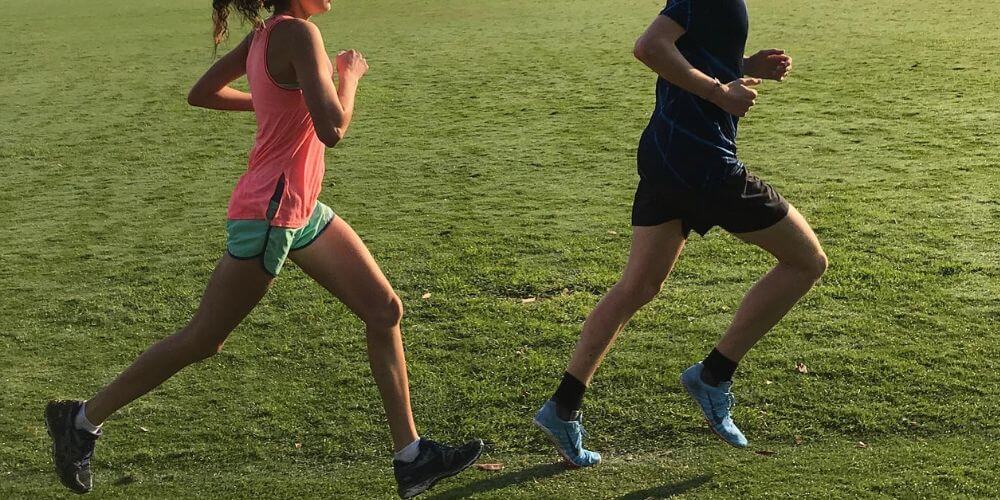
A study on the effectiveness of orthotics revealed that physical interventions involving tape and braces (orthoses) were more successful in improving the condition, with 70% of participants reporting an improvement, compared to treatments focused on reducing inflammation or making adjustments to accommodate the condition.
Week 3 Overcoming Mental Barriers – Staying Motivated
Three weeks in, and let’s be honest, there were moments this week where I questioned my sanity (and the wisdom) of this whole orthotics adventure. After the physical challenges of blisters and muscle aches, I faced an unexpected hurdle: a mental battle to stay motivated and positive. The adjustment process to my new orthotics was proving to be more demanding than I had anticipated, and I could feel my enthusiasm wavering.
As each run became a constant negotiation between comfort and discomfort, I found myself questioning whether the benefits of wearing orthotics were worth the struggles. Doubts crept in, and I wondered if I had made the right decision. It was during these moments of self-doubt that I had to consciously shift my mindset. I reminded myself of the long-term goals that led me to try orthotics in the first place: alleviating chronic foot pain, improving my running efficiency, and ultimately prolonging my ability to enjoy the sport I loved. Let’s face it, adjusting to orthotics takes time. I learned to be kind to myself, accept some discomfort as part of the process, and trust that things were moving in the right direction.
What is the paramount lesson from this phase? Mental resilience is as crucial as physical endurance in the world of running, particularly when navigating the challenges of incorporating orthotics. There will be frustrating days, but focusing on the big picture, celebrating small achievements, and practising self-compassion are the tools that will get you through.
Week 4 Reaping the Benefits of Orthotics – A Runner Transformed
As I closed out week four of my running diary, the narrative took a surprising and very much rewarding turn. Reflecting on the blisters and breaking in from week one, the muscle adjustments of week two, and the mental resilience required in week three, I now stand on the threshold of a new chapter. The side effects that once loomed large have lessened, paving the way for a rejuvenated running experience that feels both familiar and exhilaratingly new.
The benefits of persevering with orthotics have been profound and so much worth the journey. The correction of my foot biomechanics has transformed my interaction with the ground beneath me, bringing about a newfound alignment and weight distribution that I had previously only imagined. This adjustment has not only improved my running form but has also significantly reduced the risk of common injuries. As a sports physiotherapist, I can attest to the remarkable comfort and pain relief offered by the cushioning of my orthotics. This has empowered me to push my running limits without the dreaded onset of plantar fasciopathy or Achilles tendon pain that I’ve seen sideline many athletes. With every stride, I feel a boost in confidence, buoyed by the adaptability of my custom-made orthotics that seamlessly complement the unique shape and movement patterns of my feet. From a professional standpoint, I’ve witnessed how tailored orthotics can transform an athlete’s performance by providing optimal support and alignment, reducing the risk of common running injuries, and enhancing overall efficiency. Also, the reduced muscle fatigue has been a game-changer, enabling longer runs with less discomfort, a testament to the efficiency of my now properly aligned muscles.
As I reflect on this month from both a runner’s and a sports physiotherapist’s perspective, the key takeaway is clear: overcoming the initial side effects of orthotics requires patience and persistence, but the rewards—improved biomechanics, injury prevention, and enhanced comfort—reaffirm the importance of embracing this adjustment. My journey underscores a hopeful and positive outlook for runners considering orthotics, illustrating how the right support can transform challenges into triumphs on the path to achieving running goals.
Running With Orthotics
Reflecting on my month-long journey, the transition to running with orthotics has been enlightening, demonstrating the critical balance between physical adaptation and mental resilience. For runners contemplating orthotics, remember: the journey is personal, but the rewards of improved performance and injury prevention are universal.
If you’re a runner facing similar challenges, don’t give up! Remember, everyone’s body adapts at its own pace. Here’s what I’ve learned:
- Be patient: Adjusting to orthotics takes time. Trust the process and listen to your body.
- Seek professional help: A sports physiotherapist can assess your needs, ensure proper orthotics fit, and offer guidance throughout your journey.
- Celebrate small wins: Focus on the progress you’re making, no matter how small.
The importance of consulting with healthcare professionals cannot be overstated. Tailored advice and guidance are invaluable, ensuring that any adjustments to your running regimen, including the integration of orthotics, are tailored to your specific needs. This is where our team at Run Ready comes into play. Located in Melbourne, we specialise in sports physiotherapy and run coaching programs, designed to support runners like you on your journey to becoming the best version of yourselves on the track.
Orthotics FAQ
How long your orthotics will last will depend on how they are built and your running habits. Custom orthotics typically need replacing between 1 to 2 years, but this can vary based on the material’s durability and your foot condition’s severity. Hard-wearing materials like carbon fibre may extend this period. Look out for signs of wear or if you feel discomfort, as these can indicate it’s time for a new pair.
Over-the-counter (OTC) orthotics are like off-the-rack jeans—a decent fit for some, but not perfect for everyone. They offer general support, but lack the precision to address specific running needs. On the other hand, custom orthotics are precisely made to fit an individual’s foot shape and running biomechanics, offering targeted support and correction for unique foot issues and gait patterns.
While OTC orthotics might suffice for general use, they are not designed to correct specific problems that may arise from a runner’s unique foot structure or gait issues. If you’re experiencing ongoing foot pain or have specific concerns, it’s advisable to consult a podiatrist for an individual assessment and consider custom orthotics tailored to your running needs.
While orthotics can be a valuable tool for some runners, they’re not a one-size-fits-all solution, especially for beginners. Before considering orthotics, try addressing any issues with a combination of targeted physical therapy, proper training regimes, and selecting the right footwear for running. However, for daily wear, orthotics can be beneficial in providing support. If discomfort arises, it’s crucial to consult a healthcare professional, like a podiatrist or physiotherapist, to assess your individual needs. Remember, while orthotics can offer temporary relief, they’re often just a short-term tool, not a lifetime necessity. Focus on building mileage slowly, honing your form, and balancing support with your foot’s natural motion.


